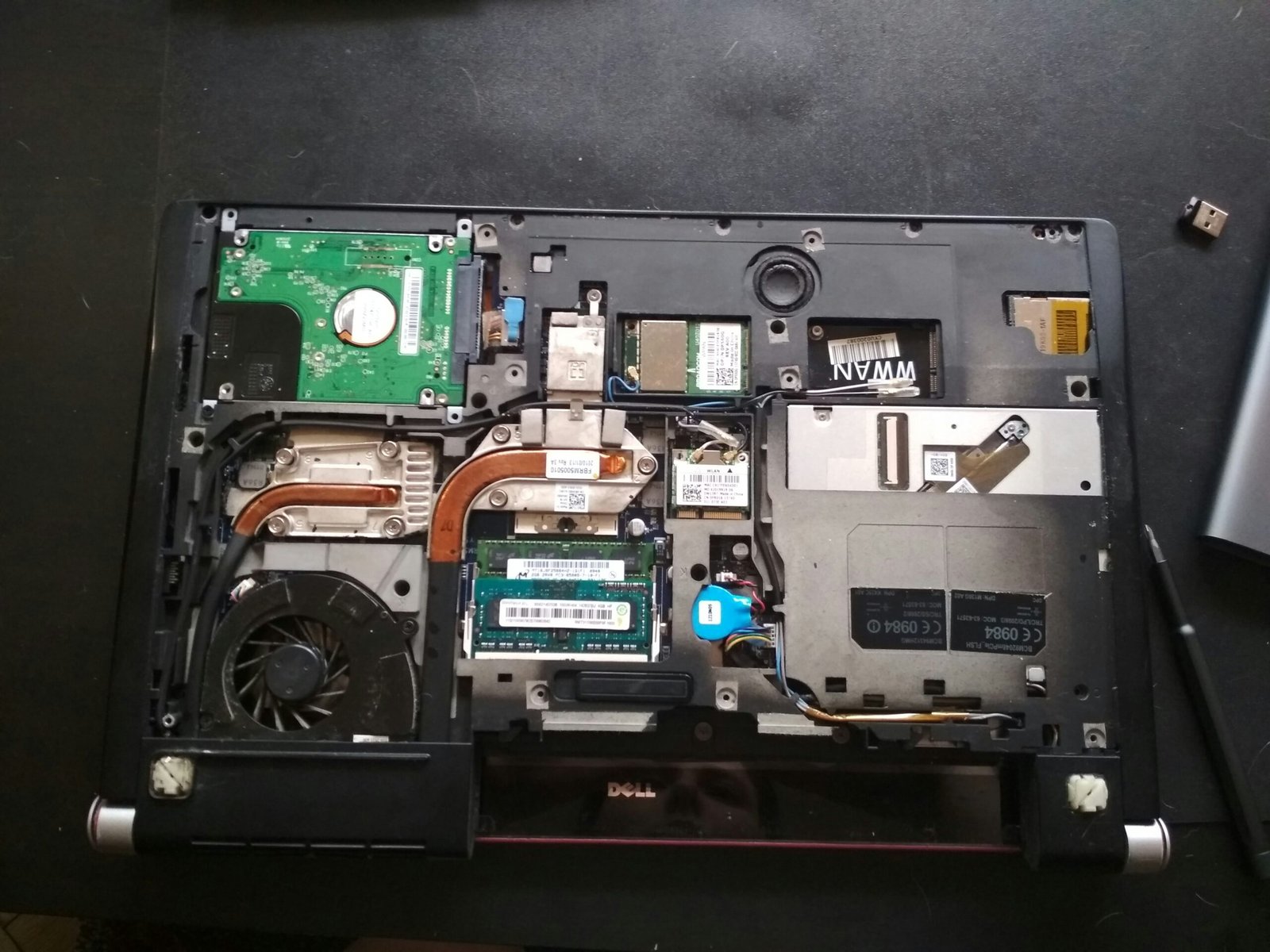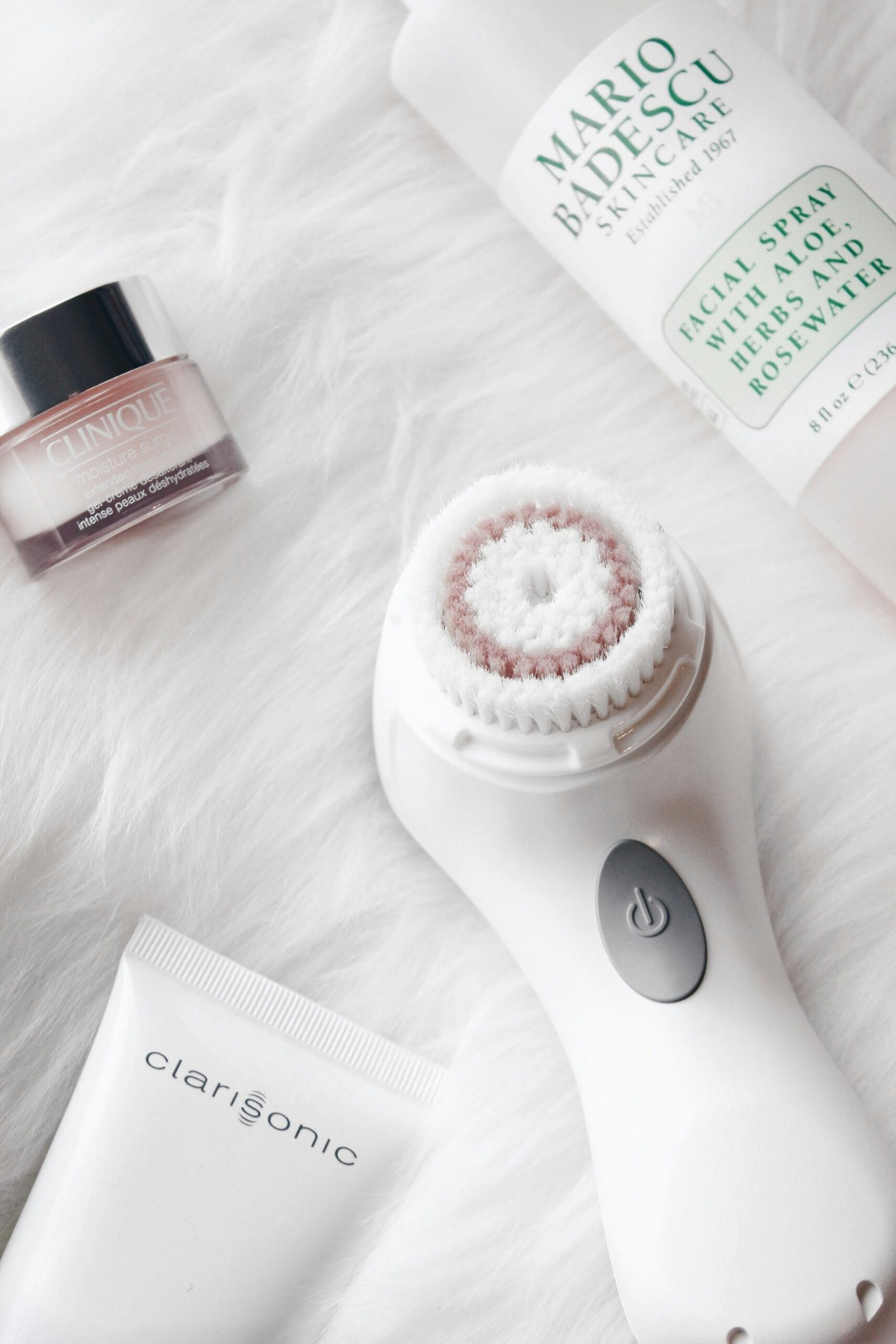
Understanding Laptop Overheating
Laptop overheating is a prevalent issue that can significantly impact performance and longevity. When a laptop overheats, it typically exceeds the manufacturer’s temperature thresholds, leading to potential hardware damage and system instability. Common signs of overheating include excessive fan noise, noticeable system slowdowns, and unexpected shutdowns. These symptoms indicate that the thermal management system is struggling to cool the internal components efficiently.
Several causes contribute to laptop overheating. One primary factor is blocked vents, which can hinder airflow and increase internal temperatures. Dust accumulation is another significant concern; over time, dust particles can build up within fans and vents, obstructing airflow and trapping heat. This often results in the cooling system working harder, which may lead to more noise and energy consumption, further exacerbating the overheating issue.
Additionally, hardware issues can also contribute to a laptop’s overheating. Aging components, such as the CPU or GPU, may produce more heat due to wear and tear. If the thermal paste that facilitates heat transfer between these components and the heat sink degrades over time, it can lead to inefficient cooling. Users may also find that using resource-heavy applications without sufficient cooling solutions can elevate their laptop’s operating temperatures.
Moreover, environmental factors, like high ambient temperatures or improper surfaces, can impact cooling efficiency. Using a laptop on soft surfaces, such as beds or couches, can block vents and further aggravate overheating problems. Understanding these causes and symptoms is essential for maintaining optimal laptop performance and prolonging its lifespan. Identifying the root of overheating can guide users toward effective solutions to mitigate this issue.
Recognizing the Symptoms of an Overheating Laptop
Identifying an overheating laptop early is crucial in preventing potential damage and reducing performance issues. One of the most significant indicators of overheating is elevated temperature readings. Users can easily detect this by touching the chassis of the laptop, particularly around the vents, as these areas typically become conspicuously warm or even uncomfortably hot during operation. Additionally, utilizing software tools to monitor internal temperatures will provide a more precise measurement of the laptop’s heat level.
Another symptom of an overheating laptop is a noticeable decline in performance speeds. When a laptop overheats, the processor may throttle, meaning it reduces its speed to cool down. Users might experience lag during tasks that require substantial resource allocation, including video editing, gaming, or running multiple applications simultaneously. This reduction in speed can become quite frustrating and often leads to diminished productivity.
Battery drain is also a significant sign of an overheating laptop. Excess heat can lead to increased energy consumption, causing the battery to deplete at an accelerated rate. Users may find themselves frequently charging their devices, unsure of the underlying cause. Monitoring battery health and performance can aid in discerning whether overheating is contributing significantly to power loss.
Finally, visual symptoms such as screen glitches can be alarming indicators of an overheating laptop. Users may observe flickering, unusual artifacts, or sudden screen freezes, which may arise due to thermal stress affecting the graphics processing unit or other internal components. Recognizing these symptoms is essential for early intervention and potential resolution.
By paying attention to these telltale signs—high temperature readings, diminished performance, battery issues, and visual disturbances—laptop users can effectively recognize when their device is in distress due to overheating, enabling timely solutions.
Immediate Solutions for Overheating Laptops
When faced with the issue of an overheating laptop, it is essential to address the situation promptly to prevent any potential damage to the device. The initial step you should take is to power down the laptop immediately. This will help protect the internal components from further stress and overheating. Once the laptop is turned off, allow it to cool down for a brief period before taking any additional action.
Next, check for any blockages in the laptop’s ventilation system. Dust, pet hair, and other debris can accumulate in the vents over time, obstructing airflow and leading to increased temperatures. Using a can of compressed air, carefully clean the vents to remove any debris. Doing this ensures that your laptop has adequate ventilation, which is vital for effective cooling.
Moreover, ensure that your laptop is placed on a hard, flat surface during use. Soft surfaces like beds or couches can restrict airflow around the laptop, contributing to overheating. When positioned on a hard surface, like a desk, the laptop is more likely to maintain a safe operating temperature.
Additionally, consider temporarily removing any non-essential hardware. This could include external devices such as USB drives, external hard drives, or peripherals that are not in use. Detaching these devices can reduce the thermal load on your laptop, as each added component generates some degree of heat. By following these immediate steps, you can relieve the pressure on your devices until more permanent solutions can be implemented.
Maintenance Tips to Prevent Overheating
To ensure your laptop operates efficiently and avoids overheating, adopting a comprehensive maintenance regimen is crucial. One of the fundamental practices is the regular cleaning of vents and fans. Over time, dust and debris accumulate within these components, obstructing airflow and leading to increased internal temperatures. Utilizing compressed air to blow out these particles can significantly improve ventilation. It is advisable to clean the vents every few months, especially in dusty environments.
Another effective strategy is the application of thermal paste between the CPU and its heat sink. This paste facilitates efficient heat transfer and is particularly important as the laptop ages. Over time, the existing thermal paste may dry out and lose its efficacy. By reapplying thermal paste as part of your laptop maintenance routine—ideally every couple of years—you can greatly enhance heat dissipation, thereby reducing the risk of overheating.
Proper storage of the laptop also plays a significant role in preventing overheating. It is best to store the laptop in a cool, dry environment and avoid exposure to direct sunlight. When using the laptop, ensure that the surface it’s placed on is flat and non-insulative. Avoid using the laptop on beds or sofas, where fabric can block the vents. Instead, utilize a hard, flat surface such as a desk or table.
Finally, routine software updates should not be overlooked. Keeping your operating system and applications up to date ensures that your laptop runs with the latest optimizations, which can aid in power management and reduce unnecessary heat generation. Having a reliable malware protection system in place also contributes to maintaining performance, as malicious software can cause excessive resource usage, leading to overheating.
Upgrading Hardware: A Solution for Persistent Overheating
Persistent overheating in laptops is a common issue that can lead to decreased performance and longevity of the device. One effective way to mitigate this problem is through hardware upgrades, which can significantly improve a laptop’s efficiency and thermal management. By addressing the thermal demands of your laptop, you will not only enhance its performance but also reduce the tendency for it to overheat.
One of the most impactful upgrades you can consider is increasing the Random Access Memory (RAM). Enhanced RAM capacity allows for smoother multitasking and reduces the load on the processor. This is particularly useful when running resource-intensive applications, as more RAM can help prevent the system from throttling performance due to heat generation. Typically, laptops with minimal RAM may strain to handle modern applications, causing them to work harder and consequently generate more heat.
Furthermore, upgrading to a Solid State Drive (SSD) can lead to substantial reductions in heat production. Unlike traditional Hard Disk Drives (HDDs), SSDs operate at lower temperatures and feature faster data retrieval speeds. This not only accelerates overall system performance but also minimizes the likelihood of overheating because the components responsible for processing data generate less heat.
Replacing the cooling system is another crucial upgrade that should not be overlooked. Most laptops come equipped with basic cooling solutions, which may not suffice under high-performance scenarios. Installing a more advanced cooling system, such as additional fans or a better heat sink, can effectively dissipate heat and maintain optimal operating temperatures, thereby preventing any associated overheating issues.
In summary, upgrading the hardware components of a laptop is a practical solution to address persistent overheating. By increasing RAM capacity, transitioning to an SSD, and enhancing the cooling system, users can alleviate the strain on their laptops, allowing for improved performance and durability. These steps can make a significant difference in reducing overheating occurrences, benefiting the overall functionality of the device.
Using Cooling Pads and Laptop Stands
When it comes to addressing the issue of overheating laptops, utilizing external cooling solutions such as laptop cooling pads and stands proves to be an effective strategy. These products are designed to enhance airflow around the laptop, which is crucial in maintaining optimal operating temperatures during usage. Overheating can lead to performance degradation, hardware damage, and decreased lifespan of the device, making it necessary to explore efficient cooling methods.
Laptop cooling pads typically feature one or more fans that help to draw heat away from the laptop’s surface. They are placed underneath the laptop, allowing for improved ventilation. Many models include adjustable fan speeds, enabling users to customize the cooling effect based on their specific needs. In addition, some cooling pads are designed with ergonomic features, providing a more comfortable typing angle, which is a bonus for users who spend extended periods working on their devices.
In contrast, laptop stands primarily focus on elevating the device, thereby promoting better airflow. By raising the laptop off the desk or other flat surfaces, these stands prevent heat build-up and allow for a more effective natural cooling process. Many stands also offer adjustable height and angle settings, catering to ergonomic needs while enhancing user comfort.
Both cooling pads and laptop stands come in various designs and price ranges, offering options suitable for different preferences and budgets. It is essential to select products that align with the specific laptop model and use-case requirements. The combination of enhancing airflow and providing ergonomic support through these solutions allows users to keep their laptops within safe operating temperatures, ultimately leading to improved performance and longevity of the device. Addressing overheating effectively can undoubtedly enhance the overall user experience.
Software Solutions and Settings Adjustments
Addressing the issue of an overheating laptop involves not only hardware considerations but also crucial software solutions and settings adjustments. One of the first steps in tackling an overheating laptop is assessing the task manager for excessive background processes. Often, numerous applications may run in the background, consuming significant CPU resources, leading to increased heat generation. By identifying and terminating unnecessary processes, users can significantly enhance their laptop’s performance and help mitigate overheating.
Furthermore, optimizing power settings plays a critical role in regulating heat output. Most operating systems offer power management features that allow users to select power plans optimized for performance or efficiency. For instance, switching to a power-saving mode can reduce CPU clock speeds, lower screen brightness, and limit background activities, ultimately resulting in lower heat production. Users should access their control panel or system preferences to evaluate and modify these power settings according to their specific requirements.
In addition to managing processes and power settings, employing software tools designed to monitor temperature and performance can provide valuable insights. Programs such as HWMonitor or Core Temp can display real-time temperature readings of various components, allowing users to identify overheating issues proactively. Many of these applications also feature options to regulate fan speeds, enhancing airflow and cooling effectiveness. Moreover, keeping drivers and software up-to-date ensures that the laptop operates optimally, as manufacturers frequently release updates to enhance performance and fix bugs that could contribute to overheating.
By strategically managing background processes, optimizing power settings, and utilizing temperature monitoring software, users can effectively decrease the likelihood of their laptop overheating, thereby prolonging its lifespan and improving overall functionality.
Seeking Professional Help: When to Call a Technician
When a laptop frequently overheats, it may indicate underlying hardware issues that require professional evaluation and intervention. Initially, users should monitor their devices for specific signs that signal the need for a technician’s expertise. An overheating laptop can lead to performance deterioration, and if you notice persistent symptoms such as overheating despite cleaning the vents or replacing thermal paste, it may be time to seek professional assistance.
One of the key indicators warranting a technician’s help is recurring unexpected shutdowns. If your laptop shuts down unexpectedly during operation, this behavior may not just be a minor inconvenience but a symptomatic response to overheating. Additionally, abnormal fan noise—such as constant high-speed operation—may suggest that internal components are struggling to keep cool, prompting further diagnosis from an experienced professional.
Total hardware failure is another critical sign. If your laptop is experiencing complete hardware malfunctions, which occurs alongside temperature-related issues, immediate professional intervention is necessary. A qualified technician can efficiently assess the laptop’s internal components, such as the cooling system and the graphics or CPU units, to identify any serious damage.
Costs associated with repairs can vary significantly based on the specific problems discovered. Generally, the expenses can range from a modest fee for cleaning or minor adjustments to more extensive costs involving parts replacements. Before proceeding with repairs, the technician will typically provide a detailed diagnostic report, outlining the issues and corresponding solutions, enabling users to make informed repair decisions.
Ultimately, while DIY solutions may effectively address minor overheating problems, recognizing when professional help is needed is crucial for ensuring the laptop’s long-term health and efficiency. Early intervention can prevent further damage and costly repairs down the line, so users should remain vigilant to the signs that indicate professional diagnostic assistance is required.
Final Thoughts and Preventative Measures
Overheating laptops can pose significant risks not only to the device itself but also to the data stored within it. Recognizing the signs of overheating—such as unusual fan noise, increased system lag, or unexpected shutdowns—is crucial for maintaining the performance and longevity of a laptop. It is essential for users to be proactive in addressing these symptoms and implementing effective solutions to prevent them from recurring.
One of the most vital preventative measures is ensuring that laptops have adequate airflow. Dust accumulation within the vents and fans can significantly hinder cooling efficiency, resulting in higher internal temperatures. Regularly cleaning these areas can help maintain optimal airflow and prevent overheating. Furthermore, utilizing a laptop cooling pad can provide additional ventilation and lower operating temperatures, especially during intensive tasks like gaming or video editing.
Another fundamental aspect of preventing overheating is monitoring system performance. Utilizing built-in tools or third-party applications to track thermal metrics can provide insights into when a laptop is running hot. Users can adjust settings, close unnecessary applications, or limit resource-intensive processes accordingly to manage heat effectively. Additionally, keeping the laptop on a hard, flat surface rather than a soft one can prevent blockages that hinder airflow.
Ultimately, fostering good habits around the use and maintenance of a laptop is vital. Regular software updates can enhance performance and energy efficiency, directly impacting the device’s overall temperature management. Ensuring your laptop’s hardware components are functioning optimally can also contribute to reduced heat generation.
In summary, being vigilant about overheating laptops and applying the discussed preventative measures can significantly mitigate risks, prolong hardware lifespan, and ensure a smoother user experience. Taking proactive care not only protects the device but also preserves valuable personal data housed within it.








